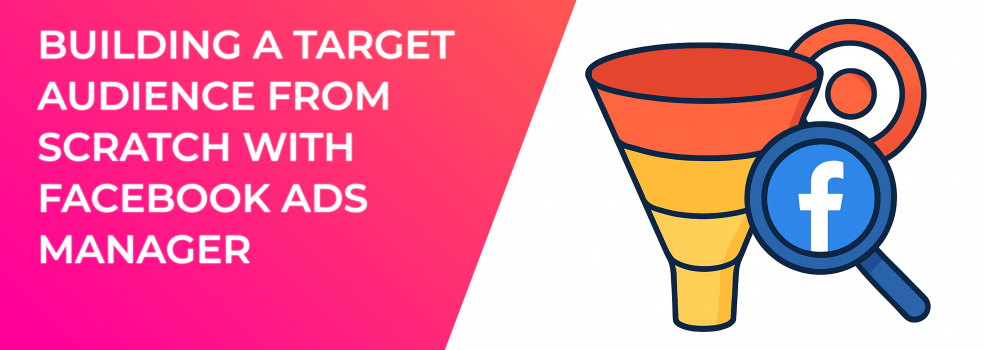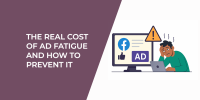Launching your very first campaign can feel intimidating. You open Facebook Ads Manager, stare at a sea of options, and wonder which switches will actually move revenue. The good news is that every successful advertiser started with the same blank slate. By following a structured approach — one that blends Facebook ad audience research with the platform’s most powerful Facebook ad targeting options — you can turn that empty account into a data-driven growth machine in weeks, not months.
Below you will find a step-by-step framework. We introduce each action with a short explanation so you know why it matters, present a concise list of tasks, then wrap up with a quick takeaway to keep you oriented before you move on. Let’s dive in.
1 Define the end-game first
Before you start clicking around, make sure the campaign has a single, measurable destination.
-
Lead generation — ebook downloads, webinar sign-ups, quiz opt-ins
-
Direct sales — product pages or Instant-Experience storefronts
-
App installs — traffic to the App Store or Google Play
-
Brand lift — video views or page engagement
Takeaway: When you know the finish line, every later choice — from bids to creatives — stays aligned with profit.
2 Map your core audience pillars
You cannot speak to everyone at once. Break the market into layers so messaging feels personal.
-
Cold prospects discovered with Facebook interest targeting and behavior filters
-
Warm audience Facebook ads — site visitors, video viewers, page engagers
-
Hot or loyal customers ready for upsell or cross-sell
Separate cold, warm and hot pools so budgets and messaging stay laser-focused.
Takeaway: Separate campaigns keep budgets clean and reporting crystal clear.
3 Brain-storm interests the smart way
Interests drive reach during the zero-data phase; aim for breadth with relevance.
-
List magazines, conferences, gurus, tools, and influencers your buyer follows
-
Drop them into a free interest extractor such as LeadEnforce to reveal hidden segments
-
Group-related ideas like “plant-based diet”, “whole-food cooking”, and “marathon running”
-
Stack two or three related interests per ad set; this balance guides the algorithm while maintaining scale
Takeaway: A well-organised sheet of interests is your campaign’s compass long after launch day.
4 Build and save your first audience
Now translate those research notes into a reusable asset inside Ads Manager.
-
Choose the broadest region that makes sense
-
Leave age and gender open unless your persona is strict
-
Paste shortlisted interests into the Detailed Targeting field
-
Click Save Audience so you can reuse it across campaigns
Takeaway: Two or three themed sets beat one gigantic cluster because you can instantly spot the winner.
5 Layer extra targeting signals
Interests alone rarely capture intent; stack other filters to sharpen the picture.
-
Job titles and industries (Finance Manager, SaaS, Hospitality)
-
Purchase behavior (online shoppers, frequent international travelers)
-
Life events (recently moved, new parents, newly engaged)
-
Device type (iOS users, 4G only)
Activating multiple filters in Ads Manager narrows millions of users into one high-intent audience ready to convert.
Takeaway: Combining contextual and behavioral cues turns broad curiosity into click-ready intent.
6 Remember placement matters
Where the ad appears influences cost as much as who sees it.
-
Enable audience network Facebook ads alongside News Feed for cheaper CPMs
-
Review breakdown reports; switch off low-quality placements once data proves it
-
After ≈ 50 conversions in a week, activate Advantage placements so Meta can hunt for hidden value
Takeaway: Smart placement testing squeezes more results from the same spend.
7 Retarget and then lookalike
Warm pools power the best CPAs; build them early and clone them fast.
-
30-day website visitors
-
50 percent video viewers
-
Instagram engagers
When any list reaches roughly one thousand people, generate a 1% lookalike. That is how to create a lookalike audience in Facebook ads without waiting months for mountains of data.
Takeaway: Retargeting fuels efficient remarketing today and unlocks algorithmic scale tomorrow.
8 Match creative to micro-segments
Even perfect targeting fails if the message feels generic.
-
Hook the pain point your interests imply
-
State one clear benefit — faster workflow or lower cost, not both
-
Add social proof from someone the viewer relates to
-
Close with a single call to action
Takeaway: Relevance drives click-through rate, and high CTR drives down CPM — an algorithmic win-win.
9 Track numbers that matter
Data tells you when to scale and when to pivot; ignore vanity metrics.
-
CPM for auction cost and ad relevance
-
Link CTR for message-audience fit
-
CPC for early efficiency
-
CPA or ROAS for profitability
Optimization in action: as audience targeting improves, CPM drops and CTR climbs week over week.
Takeaway: Change only one variable — creative, audience, or bid — at a time so you know what caused the swing.
10 Graduate to automation at scale
Manual control teaches you the market; automation multiplies your lessons.
-
After ≈ $1,000 a month in spend and daily conversions, test Advantage Plus Shopping or Sales
-
Keep at least one manual sandbox alive for fresh Facebook ads targeting interests
Takeaway: Automation should amplify proven tactics, not replace disciplined experimentation.
11 Common mistakes to dodge
Avoiding a few classic traps accelerates learning and preserves budget.
-
Packing twenty-five interests into one ad set — group three to six instead
-
Retargeting with only a hundred visitors — wait for statistical weight
-
Ignoring country-specific CPM swings
-
Pausing ad sets before the seventy-two-hour learning phase ends
Takeaway: Small tweaks compound; patience and structure beat frantic resets every time.
The road ahead
Building a Facebook ads audience from scratch is structured curiosity. List objectives, mine Facebook interest targeting keywords, layer behaviors, retarget engagers, grow lookalikes, and keep reading the scoreboard. Follow that loop and CPMs fall while revenue climbs — proof that effective Facebook ad targeting relies on method, not luck. Need deeper insights fast? LeadEnforce uncovers micro-segments your competitors miss, placing the next winning keyword within reach.

